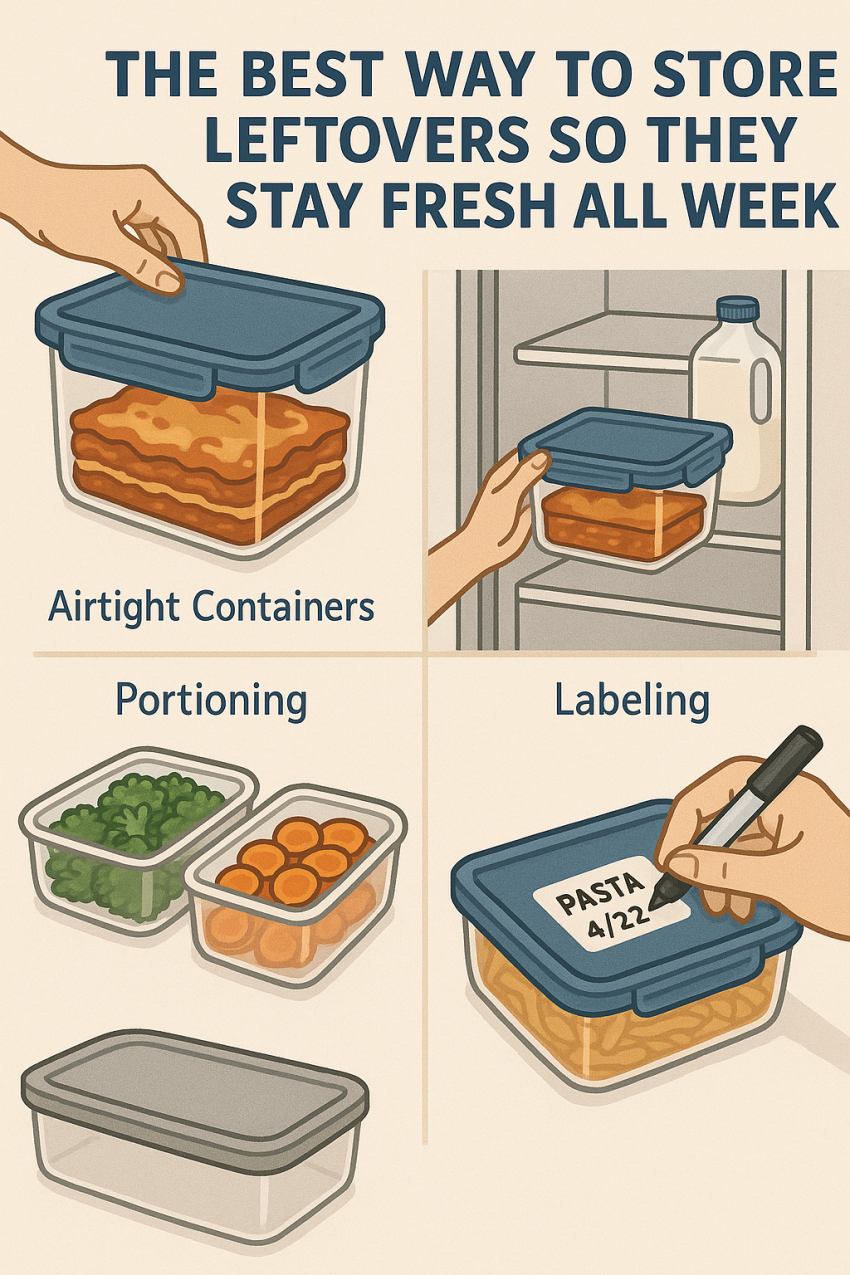ADVERTISEMENT
Leftovers are a lifesaver when it comes to saving time, money, and effort — but only if they’re stored properly. Nobody wants to open the fridge and find their once-delicious dinner dried out, soggy, or worse… spoiled. Whether you’re meal prepping or saving last night’s feast, this guide will walk you through the smartest and safest ways to store leftovers so they stay fresh and flavorful for as long as possible.
Why Proper Leftover Storage Matters
When you store food correctly, you extend its shelf life and reduce waste. Proper storage:
- Keeps food tasting great
- Maintains texture and color
- Prevents bacterial growth
- Saves money by reducing food waste
Food safety first: Bacteria thrive between 40°F and 140°F. The faster food cools down and stays cold, the safer it is to eat later.
1. Cool It Quickly
Don’t leave food sitting out on the counter. Refrigerate leftovers within 2 hours of cooking (or 1 hour if it’s hot out).
To cool food faster:
- Divide large portions into shallow containers
- Use an ice bath for big pots of soup or chili
- Spread food out in a thin layer before refrigerating
Pro Tip: A shallow container (no more than 2 inches deep) helps cool food evenly and quickly.
2. Use the Right Containers
The container you use makes a big difference. The best choices are:
- Glass or BPA-free plastic containers with tight-fitting lids
- Silicone bags for flexible, space-saving storage
- Airtight jars for sauces, dressings, and broths
Avoid:
- Disposable takeout containers (often not airtight)
- Aluminum foil or plastic wrap for long-term fridge storage
Clear containers are best — you can see what’s inside and remember to eat it!
3. Label Everything
Use masking tape or labels to write the date and name of the food item before storing it. This helps prevent mystery meals and lets you prioritize older food first.
“First in, first out” is a golden rule in kitchens. Eat the oldest leftovers first.
4. Organize Your Fridge
Designate a “leftover zone” in your fridge to avoid losing food in the back.
Tips for storage:
- Place newer leftovers behind older ones
- Keep raw meats separate to avoid cross-contamination
- Store dairy and cooked meals on upper shelves (colder and more consistent temperature)
5. Know the Shelf Life
Not all leftovers are created equal. Here’s how long common foods last in the fridge:
| Food Item | Fridge Life |
|---|---|
| Cooked meat/poultry | 3–4 days |
| Soups/stews | 3–4 days |
| Cooked vegetables | 3–5 days |
| Rice and pasta | 3–5 days |
| Pizza | 3–4 days |
| Eggs (hard-boiled) | 1 week |
| Sauces/gravy | 1–2 days |
Important: If in doubt, throw it out. Don’t risk food poisoning.
continued on next page
ADVERTISEMENT


